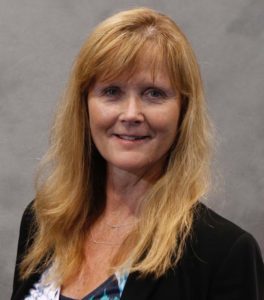
Updated March 2023
Kate Avery, MPH
Jennifer Sealey-Voyksner had celiac disease symptoms her whole life, but didn’t get diagnosed until her mid-thirties. Jennifer, now the co-founder and Chief Scientific Officer of ImmunogenX, recently spoke with Claire Baker, Beyond Celiac Senior Director of Communications, for episode 39 of our Celiac Straight Talk Podcast.

Jennifer grew up in Canada and was “very anemic” and “always uncomfortable,” but it was difficult to associate those symptoms with celiac disease. When she moved out on her own and began cooking for herself, she ate a lot more gluten-containing foods and began to have more symptoms. She took up distance running and said her marathon training involved eating a lot of pasta, which of course made her symptoms even worse. She went to many doctors but said “nothing worked except to make me more sick,” which was “very frustrating.”
Eventually, Jennifer received her diagnosis of celiac disease, which she called “a revelation.” She learned about the basics of a gluten-free diet from a nutritionist and embarked on the diet. She explained “the more difficult step was dealing with friends and family,” some of whom didn’t understand what it meant to completely eliminate gluten. Well-meaning friends tried to cook for her, but then would feel bad when they accidentally glutened her. As celiac disease becomes more recognized, Jennifer says other people’s perceptions have changed somewhat, but adjusting to the gluten-free diet is “not a one-time thing […] It’s a constant adjustment. It’s different every day and every place you go.” Even now, she said she hears comments like “She’s one of those,” or, “It’s a fad diet.”
Now, Jennifer says she is “on the very sensitive side of the spectrum” of symptoms when she accidentally ingests gluten, and brain fog is commonly the first sign that she gets. “If it’s a very small amount of gluten, I still get brain fog,” she explained, “but otherwise it launches into the full spectrum of GI distress-type symptoms.” Her biggest challenge is traveling, which she has to do fairly frequently as part of her role at ImmunogenX.
As Jennifer adjusted to the gluten-free diet, she had one tool that most people with celiac disease don’t have: her own laboratory, where she could analyze her food. Jennifer was pursuing a PhD in analytical chemistry, which involves analyzing substances for their components. While learning to eat gluten-free, she noticed that she “would buy a gluten-free item… but kept getting symptoms.” In the United States, foods are allowed to be labeled gluten-free while still containing up to 20 parts per million of gluten. But using the instruments in her lab, Jennifer could detect gluten below the 20 ppm threshold, and she started finding low levels of gluten in some of the products she was testing. She began trying to develop a highly sensitive method to detect even the smallest amounts of gluten from cross-contact. As part of this work, she co-founded ImmunogenX, a small biotech company that focuses on the needs of people with celiac disease.
While Jennifer was pursuing her PhD, her lab worked closely with the company that was helping to develop latiglutenase, a potential celiac disease treatment. Latiglutenase is a combination of two enzymes that “work together to break up the [gluten] proteins into small enough pieces that these pieces do not trigger the autoimmune reaction.” At that time, latiglutenase was being developed by a different pharmaceutical company. Through her research collaboration, Jennifer gained a deep knowledge of latiglutenase and saw its huge potential to help people with celiac disease achieve a better quality of life. Eventually, Jennifer encouraged ImmunogenX to acquire the rights to latiglutenase so they could keep developing the drug.
Latiglutenase is designed to be used in conjunction with a strict gluten-free diet and is taken orally as a drink with meals that may contain gluten. It protects against cross-contact, a significant challenge when eating outside of the home. ImmunogenX is still studying the frequency at which it must be taken, but “it is meant to overcome any potential cross-contamination.” This would help people travel and dine out with less fear.
Right now, latiglutenase is in late Phase 2 clinical trial (learn more at Solutions for Celiac). Jennifer explained that in previous placebo-controlled clinical trials, latiglutenase has been shown to reduce the severity and frequency of common celiac disease symptoms. The trials have also shown the drug has a favorable safety profile. ImmunogenX hopes to begin a Phase 3 program within the next 12 months and is actively engaged in the planning stages. Phase 3 trials are the final phase before a drug goes to the FDA for approval to become a drug that doctors can prescribe for their patients.
In the podcast, Jennifer also spoke about the process of designing clinical trials for potential celiac disease medications. Both current ImmunogenX trials involve a short low-level, intermittent gluten exposure element, which is required in order to make sure latiglutenase works effectively with a known amount of gluten exposure. Jennifer explained that the ImmunogenX team knows “our therapy works for attenuating gluten, so we have to show that it works… We’re trying to show the drug is safe and it works in a real-world situation where you get glutened. So that’s why we have to put some gluten in there.” However, they also know the gluten exposure aspect of these studies is daunting and don’t want to make trial participants uncomfortable. She encouraged anyone interested in clinical trials to pick a trial that is right for them and thanked “everyone who volunteers to move these clinical trials forward.”
ImmunogenX is also developing CypCel, “a tool…to study villous health after diagnosis,” which would allow for noninvasive testing of the health of the small intestine. Currently, the only way to check if the small intestine is healing is to do an endoscopy and biopsy. CypCel would allow doctors to check on small intestine healing without an invasive procedure.
ImmunogenX remains a small company focused on celiac disease and has high hopes for a better future for everyone with the disease.
To hear more about Jennifer’s story, you can find episode 39 of Celiac Straight Talk Podcast wherever you listen to podcasts. You can also read more about the Solutions for Celiac study in our previous Research News articles.
Beyond Celiac is helping to recruit for these clinical trials as a part of our commitment to accelerating research.
Opt-in to stay up-to-date on the latest news.
Yes, I want to advance research No, I'd prefer not to